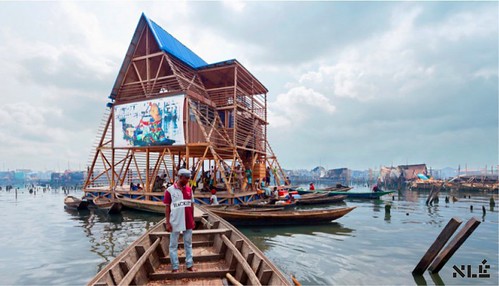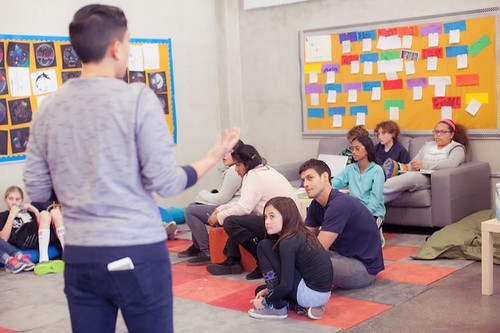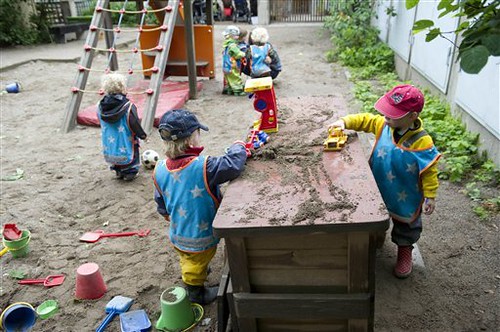Description: Read the article and learn about the best examples of an innovative approach to teaching and learning that allow every child develop his best abilities.
H1: The Most Innovative Schools in the World
While the majority of us were educated in a traditional way, memorizing facts from old-fashionable paper textbooks, slaving away on handwriting assignments and trying to find answersto some boring questions like ‘What Is a Reaction Paper?’, there are lots of schools around the globe what take a different approach when it comes to teaching and to learning. These are places where educators consider classrooms as more than just places to dive into textbooks. Here are the best examples of schools where students can get unique and inspiring experiences.
H2: Makoko Floating School, Nigeria
The school was founded in 2012 the help of the Heinrich Böll Foundation and the United Nations. This floating school for all ages is three stories high and can resist rising water levels in the lagoon. It can serve as a great example for future building projects in the coastal regions in Africa. The school is equipped with solar panels to collect energy. It has a total area of 1,000sq feetthat can house up to 100 students and consists of classrooms, a play area, and compost toilets.
Makoko Floating School, Nigeria
Photo Credits: http://www.nleworks.com/case/makoko-floating-school/
AltSchool US - photo credits: https://www.yelp.com
Egalia Pre-School, Sweden. Photo credits: http://www.cleveland.com
H2: AltSchool, the United States
The first AltSchool was opened in San Francisco in 2013 and it provides personalized learning experience to kids from ages 4 to 14. The school completely differs from the traditional education as it avoids common testing model. Children learn technology skills and develop flexible thinking to adapt to the realities of the constantly changing world. Children transform ordinary things into circuit boards and learn to do 3D models as they build playhouses. The learning process is not an ordinary consumption of figures and facts. Kids learn to problem solve and social-emotional learning is a priority. AltSchool is growing and expending to Palo Alto, California and Brooklyn, New York. In the future, they want to go nationwide.
H2: Big Picture Learning, Rhode Island
The school is located in Rhode Island’s city of Providence and system is currently working at 55 schools nationwide.The learning is based on the goals of every student and the curriculum is relevant to the real world. The learning process is organized through an off-campus internship and includes real-life training in a design studio, law office, hospital, research lab, and more. There are also college course and every quarter students show their projects to their mentors, peers, advisor, parents, and the community.
H2: Egalia Pre-School, Sweden
The school system is based on the idea of complete equality of all students and school become famous for its rejection of gender-based pronouns. Children do not use words ‘he’ or ‘she’ but call other kids by their first names. Kids are taught to judge each other taking into account their actions and not stereotypes. The mission of the school is to avoid any discrimination based on religion, gender, disability, sexual orientation or age. This approach is applied in every aspect of the teaching process and in the way how teachers communicate with parents and each other. Educators think that in this way, kids learn democracy in the theory and practice and will become good world citizens without any prejudices.
H2: Ørestad Gymnasium, Denmark
Ørestad Gymnasium is actually one giant glass classroom that house 358 high school students. They learn to avoid traditional instruction in an expansive cube or a gymnasium. Teachers encourage students to collaborate in wide-open settings and hope that the kids will be able to think flexibly on different topics later when they become adults. Children do research and work together to solve different real problems. Kids are encouraged to play active roles in their education.
H2: Steve Jobs School, the Netherlands
Children study at their own pace and every student has an Individual Development Plan which is adjusted by their coaches every six weeks. Taking into account the outcomes of the IDP, every child is offered a variety of new personal learning challenges to choose from. All students get iPads with useful apps to guide their personalized learning. The main idea is to allow kids to design their own education.
Instead of classes, there are core groups where students with the difference in age up to 4 years learn together. A considerable amount of time is devoted to working on independent projects and the social development of every student.
_____________________________



Comments
Post a Comment